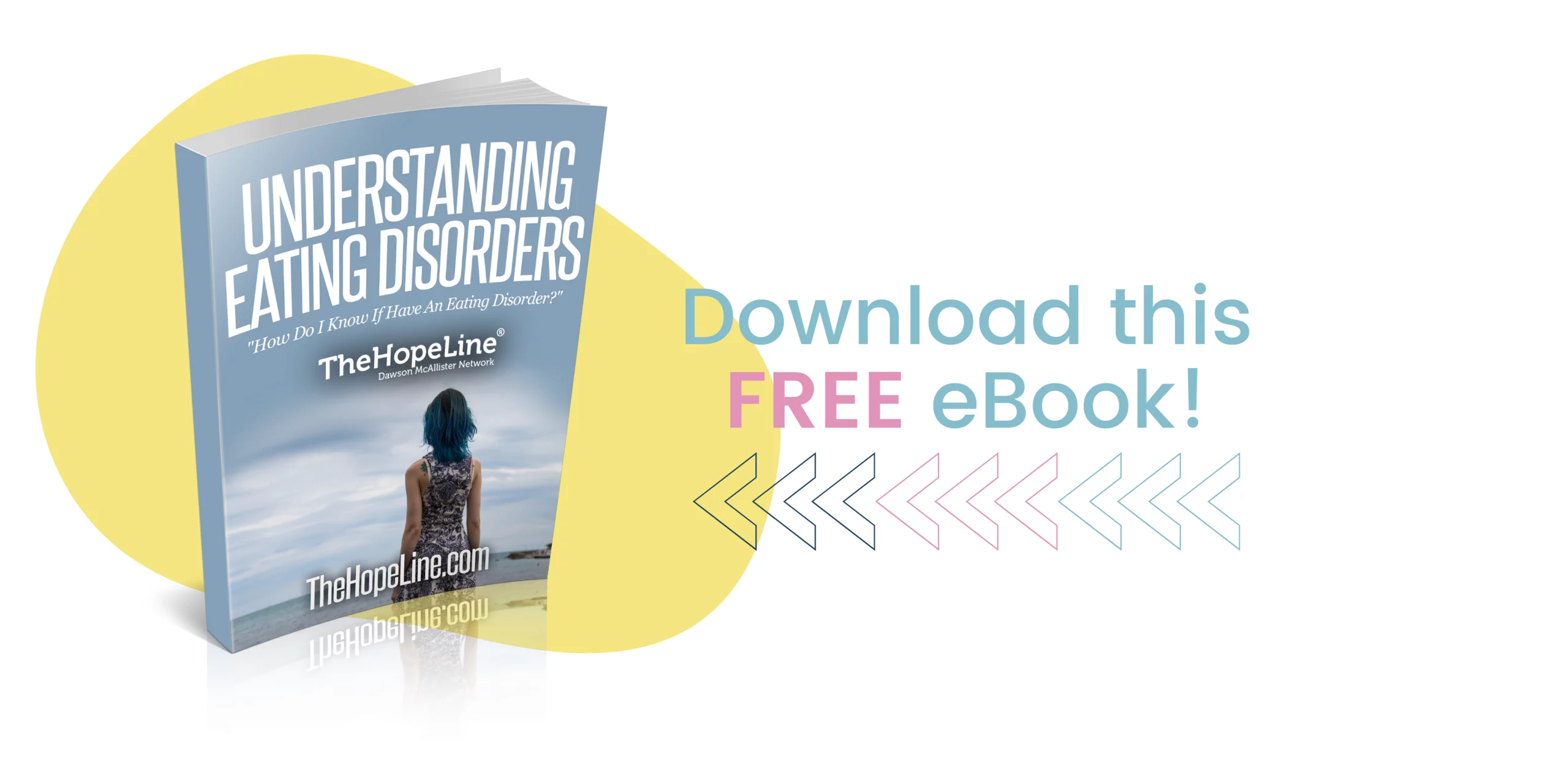Eating Issues Manifest in Many Different Ways
Perhaps caring friends or family members are expressing concern about the way you eat. If you are completely honest with yourself, deep down inside you sense that something is wrong (although it is very common for those struggling with disordered eating to be in denial).
Eating issues can manifest themselves in many different ways, but there are two extremes: Some people are living on the obsessive side, such as constantly worrying about their weight, meticulously counting calories, compulsively exercising and/or living in fear of eating the wrong thing. Other people struggle with chaotic, out-of-control eating — especially in response to stress or emotional upset – and/or lack any structure or regularity of meals. Many people fall somewhere in between, leaning one way or the other, while others swing back and forth between the two extremes such as with yo-yo dieting. Does any of this sound familiar? If so, read on.
To start, let’s clarify some terminology.
How to Manage an Eating Disorder
What is an “Eating Disorder?”
An “Eating Disorder” refers to a medical diagnosis based on a very specific set of criteria. Examples include Anorexia, Bulimia, Binge Eating Disorder and Avoidant Restrictive Food Intake Disorder (ARFID). There is also a lesser-known category called “OSFED,” which stands for Other Specified Feeding or Eating Disorder (formerly EDNOS or Eating Disorder Not Otherwise Specified). Although a person struggling with OSFED does not meet the full diagnostic criteria for other eating disorders, it is still a serious issue requiring professional attention. If you haven’t already done so, check out our article “What is OSFED (EDNOS)?” to learn more.
What is “Disordered Eating?”
While the term “eating disorder” refers to a medical diagnosis, the term “disordered eating” refers to a type of behavior. Disordered eating behaviors include out-of-control eating (such as stress eating and emotional eating), weight preoccupation, pathological dieting, bingeing, purging, compulsive exercise and health food obsessions.
The causes of disordered eating are complex. Here are some of them:
- Psychological – feelings of inadequacy or lack of control in life, depression, anxiety
- Interpersonal – troubled relationships, difficulty expressing emotions, history of teasing or abuse, family pressures
- Social – cultural emphasis on appearance, thinness, and perfection
- Biological – a genetic predisposition (runs in families)
Disordered eating practices can range from mild to severe. These behaviors may fit part of the criteria for an eating disorder diagnosis or they may signal an eating issue that is not medically diagnosable. It’s a matter of degree. Engaging in fewer and/or milder behaviors, however, can eventually lead to the development of a full-blown eating disorder. If you have children, or plan to, modeling these unhealthy practices can put them at risk for developing an eating disorder in the future.
Some eating issues that are not categorized as eating disorders have been defined and named. Examples include:
- Orthorexia – going to extremes in pursuit of a “healthy” diet
- Bigorexia – obsession with increased muscle development (also called muscle dysmorphic disorder)
- Diabulima – persons with Type I diabetes who lower insulin doses in order to lose weight
- Chewing and Spitting – avoidance of swallowing certain foods in an attempt to control weight
Even if your disordered eating practices don’t place you in a defined category, they are taking a toll on you physically, mentally, emotionally and spiritually. Disordered eating of any kind interferes with daily functioning – preventing joy, peace and God’s best for your life.
A Wide Range of Behaviors
Disordered eating includes a wide range of behaviors. Here are some specific examples, but this is by no means a comprehensive listing.
- You’re always on a diet, always coming off a diet, or always getting ready to go on one again (chronic dieting).
- You categorize foods as “safe” versus “off-limits.”
- You skip meals or eat very little to try to control your weight, whether daily or intermittently.
- You are obsessed with exercising and follow an excessive or rigid routine.
- You are obsessed with eating only “pure,” natural, raw and/or organic foods.
- You binge and/or purge sometimes. You substitute supplements and fad diets for real food.
- You skip social occasions because you feel fat, or because you are afraid of what’s being served, even if your weight is normal.
- You eat large amounts of foods in secret and hide the evidence.
- You overeat to meet non-physical needs such as: to medicate, comfort, distract, companion, reward or punish yourself.
- You restrict eating to feel in control, distract or punish.
- You refuse to eat regular meals, choosing instead to ‘nibble’ throughout the day on small portions of food (which usually leads to bingeing).
- You weigh yourself multiple times a day.
- You believe that everyone is as focused on your weight as you are.
- You are preoccupied with your body shape.
Each practice in the above list is considered a disordered eating behavior. For many disordered eaters, self-worth is based on body shape and weight. The underlying fears, shame and preoccupations interfere with personal relationships and lead to social isolation. Perhaps you engage in one or several of the behaviors. Even if you don’t meet the full criteria for an eating disorder, this is not how God intended for us to live.
A Common Struggle
Many people struggle with disordered eating practices. Eating issues are so pervasive in our society that it is easy to start to believe they are normal. But that is far from the truth.
The following facts and figures reinforce the widespread problem of disordered eating and body image concerns:
1. 3/4 of women have some sort of eating issue.
2. As many as 66% of women and 52% of men report feelings of dissatisfaction or inadequacy regarding their weight.
3. 35% of dieters in the US engage in “Pathological Dieting”.
4. The body-mass index for most Miss America winners in the past 3 decades lies within the range of under-nutrition.
5. ¾ of women whose weights fall in the “normal” range feel too fat and wish to lose weight, desiring on average to weigh only slightly more than weights in the Anorexia Nervosa range.
6. Sub-Clinical disorders are documented as being the most common type of disordered eating among college women.
7. Nearly 3 out of 4 adolescent girls have been or are currently dieting.
8. Athletes with higher levels of weight and diet concerns also show higher levels of neuroticism and lower levels of emotional “well-being” and stability.
9. Sub-Clinical eating disorders often lead to the development of more serious, clinical eating disorders.
10. In addition to early onset during childhood, adolescence and first independence, eating disorders are often developed later in life, triggered by age-related weight gain, as well as life events such as marriage, pregnancy, and loss of a loved one.
11. 95% of dieters suffer from “weight cycling” (losing, regaining and even gaining additional pounds).
Some professionals estimate that as many as four out of five people engage in some type of disordered eating. This suggests that only one out of five people have a truly healthy relationship with food — enjoying meals and eating for physical (not emotional or psychological) reasons, without obsessing about weight, worrying about calories, trying to eat perfectly or feeling powerless over food.
What to Do?
Whether you qualify for an eating disorder diagnosis or not, it’s time to break free from your eating issues and learn to live in a healthier, balanced way — neither obsessing about food nor feeling out of control. Below are some steps to take.
- Take Finding Balance's Self-Test(s) to get a better sense of your eating issue(s).
- Find someone to talk to who can offer objective and balanced advice, addressing the physical, emotional, intellectual and spiritual aspects of your issues. For tips on who to talk to, read the “Finding Treatment” article. “Finding A Nutritionist” may also be helpful to you.
- Explore their “Eat Well, Live Well” section, which offers tips and nutrition information to help you find your way back to a healthy balance with regard to eating and weight control.
- Check out Finding Balance's “Books” and “Videos” sections to find resources that apply directly to your unique struggle.
- Seek community and support.
- Consider taking Finding Balance's Lasting Freedom self-study courses (not a replacement for one-on-one care with a professional).
The Bottom Line:
Struggling with disordered eating, no matter how extreme, steals from your life. It promises happiness, control, acceptance, affirmation, and security, but these promises are false. Only by breaking free of your eating issue will you experience the life you crave. Take a step towards freedom now.
“Let us then with confidence draw near to the throne of grace, that we may receive mercy and find grace to help in time of need.” Heb. 4:16 (ESV)
This blog was originally published here. It is being republished with permission from our friends at Finding Balance.
Want to know more about eating disorders? Download TheHopeLine's free eBook today.



